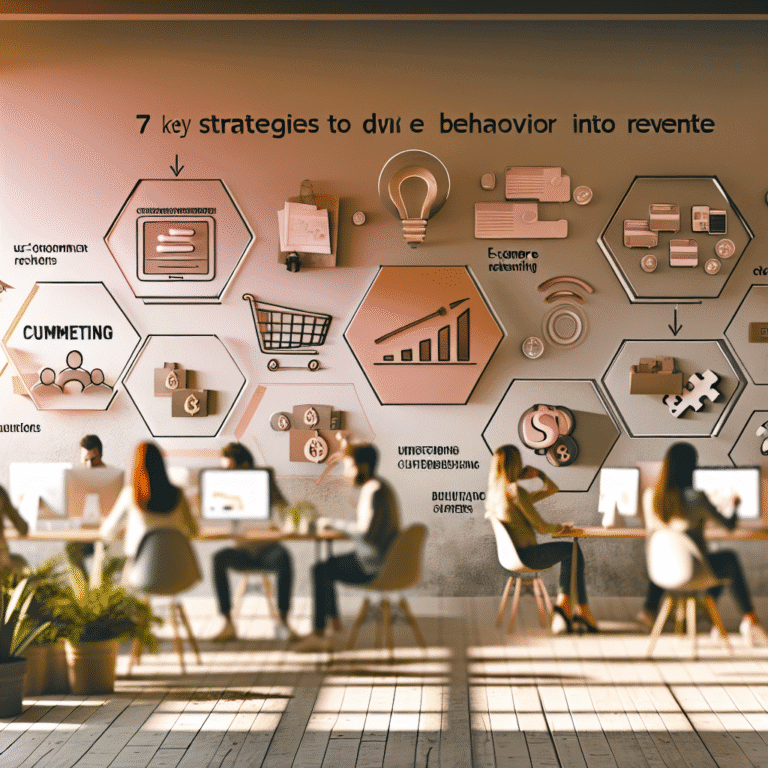E-Commerce Growth Without the Guesswork
Lots of online shops have heaps of customer data, yet making sense of it can feel like trying to read tea leaves. You know the conversion rates and keep an eye on those abandoned carts. But nudging shoppers to buy? That's where things get tricky.
Sometimes, you think, "Let's try a different button colour!" Another A/B test, anyone? But without understanding what goes on in your visitor’s mind, it's like rearranging deck chairs on the Titanic. You're not really tweaking behaviour, just the uncertainty.
Here's the beauty of it: by using a bit of behavioural psychology, we can get to the heart of the matter. It’s about understanding not just the clicks but what happens upstairs in their brain. You can really make data-driven decisions almost magically profitable.
This isn't about pulling a fast one. It’s about helping customers say "yes" to something they're already thinking about — in a way their minds like.
Why Shoppers Aren’t So Logical
If we all shopped with logic, carts wouldn’t get ditched last minute and nobody would buy that singing cactus at 2 a.m. Online shopping behaviour isn't all about brains; it’s about those old psychological reflexes.
What’s up with purchasing hesitations?
- Risk Aversion: 'Buy Now' can sound permanent. What if the size is wrong or returns are a pain? Sometimes sticking with nothing feels safer.
- Loss Aversion: The pain of losing a tenner feels worse than gaining one.
- Cognitive Load: Too many product choices and the brain says “Nope.” Sometimes, less choice leads to more buying.
- Social Proof: We mimic others. Items with loads of reviews seem safe.
- Emotion-led Choices: Emotion comes first. Logic makes a late entrance, often post-purchase.
10 Triggers to Boost Add-to-Cart Action
Getting a shopper to add something to their cart is about talking to their subconscious. Here are ten psychological nudges to give a whirl.
1. The Anchoring Trick
Start with the pricey stuff. The mid-range items then seem like bargains.
Example: Nespresso shows the swanky £300 machines first, so the £129 one feels nicely affordable.
2. Reciprocity Works
Give a little; get a lot. Offer a size guide or a wishlist email before you ask for a sale. People kinda feel like returning the favour.
3. Real Scarcity
"Only 3 left in stock!" works — if true. Fake it, and it backfires. Real limitations create urgency, which can cut down on those abandoned carts.
4. Commitment Bias
Start small: sign up for emails, save a wishlist, click a “notify me” button. These little yeses make ‘Add to Cart’ feel like a tiny step, not a giant leap.
5. Clever Category Grouping
Keep it simple: group things by what they solve, not what they are.
- "Dry Skin Helpers" rather than "Creams & Lotions"
- "Weekend Getaways" instead of "Tote Bags"
This is one of those tactics that's popping up less often than it should.
6. Frame for Loss
Look at these slogans:
- ✅ “10% off today”
- ❌ “Miss 10% off if you leave”
Avoiding loss has more kick psychologically than chasing a bargain.
7. Default Bias
Highlight bestsellers as “Popular Choice” or pre-select common sizes. Folks like to go with the flow.
8. Smooth out the UX
Awkward mobile checkouts or extra forms are a no-go. Keep the process smooth, simple, and easy-peasy.
9. Layered Social Proof
Go beyond stars. Build trust with:
- “1,000 runners switched this year”
- “12 bought in the last 24 hours”
Good social proof builds confidence just when folks might be hesitating.
10. Time-based Cues
Timing? It’s everything. Phrase your offer around little events:
- Monday motivation
- Payday treat
- “Because Tuesdays need love”
These reasons give people the nudge to buy right now.
Match Psychology with E-Commerce
Analytics tell you what happened: which button folks clicked, or where they gave up. But data often misses the why. Psychology helps decode this mystery.
Consider these scenarios:
- High shipping costs? Was it shocking or just too late in the funnel?
- Google for cheaper? Or afraid of a bad fit?
By marrying analytics with some mind science, you can:
- Run smarter A/B tests based on what’s been observed
- Tweak copy and buttons to ease any emotional stumbles
- Pivot product pages towards how shoppers feel, not just what they see
A Little Psychological Detour: “Free Returns”
Counterintuitive but true: shops with free return policies often have fewer returns. Why? It slashes perceived risk. Shoppers feel more at ease checking out, and often they end up loving the item because it feels like it's really theirs.
Pairing Psychology with Your Funnel
Winning e-commerce brands aren’t just chucking AI and discounts at customers. They respect buyer psychology.
How do they win?
- Use psychology like a good compass
- Set up defaults and layouts that match how brains work
- Sell urgently but truthfully
- Interpret data with a human touch
Closing Thought
Data is like a compass, but psychology is the Google Maps. Successful brands don't just chase bounce rates. They dive into what goes on in the consumer's head.
Shopping’s about emotion and habit, much more than logic.
So, put down the guessing game. It's time to decode what's really going on.





